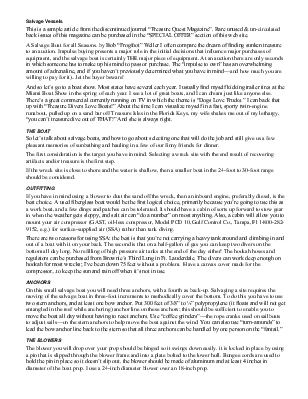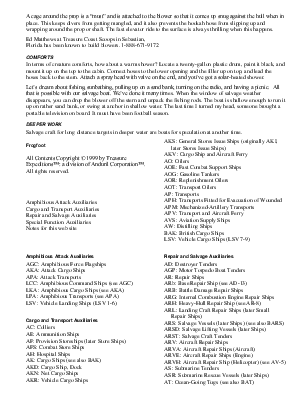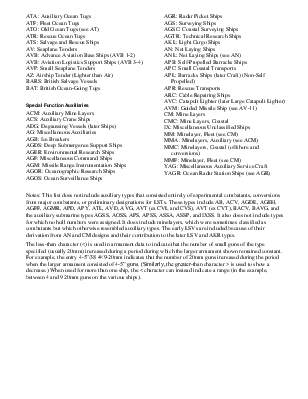


This is a sample article from the discontinued journal “Treasure Quest Magazine”. Rare unused & un-circulated back issues of this magazine can be purchased in the “SPECIAL OFFER” section of this web site.
A Salvage Boat for all Seasons. by Bob “Frogfoot” Weller I often compare the dream of finding sunken treasure to an auction. Impulse buying presents a major role in the initial decisions that influence major purchases of equipment, and the salvage boat is certainly THE major piece of equipment. At an auction there are only seconds in which someone has to make up his mind to pass or purchase. The “impulse to own” has an overwhelming amount of adrenaline, and if you haven’t previously determined what you have in mind—and how much you are willing to pay for it)...let the buyer beware!
And so let’s go to a boat show. Most states have several each year. I usually find myself kicking trailer tires at the Miami Boat Show in the spring of each year. I see a lot of great boats, and I can dream just like anyone else. There’s a great commercial currently running on TV in which the theme is “Dogs Love Trucks.” I can back that up with “Treasure Divers Love Boats!” About the time I can visualize myself in a fast, sporty twin-engine runabout, pulled up on a sand bar off Treasure Isles in the Florida Keys, my wife shakes me out of my lethargy, “you can’t treasure dive out of THAT!” And she is always right.
So let’s talk about salvage boats, and how to go about selecting one that will do the job and still give us a few pleasant memories of sunbathing and hauling in a few of our finny friends for dinner.
The first consideration is the target you have in mind. Selecting a wreck site with the end result of recovering artifacts and/or treasure is the first step.
If the wreck site is close to shore and the water is shallow, then a smaller boat in the 24-foot to 30-foot range should be considered.
If you have in mind using a blower to dust the sand off the wreck, then an inboard engine, preferably diesel, is the best choice. A used fiberglass boat would be the first logical choice, primarily because you’re going to use this as a work boat, and a few dings and patches can be tolerated. It should have a cabin of sorts up forward to stow gear in when the weather gets sloppy, and salt air can “do a number” on most anything. Also, a cabin will allow you to mount your air compressor (GAST, oil-less compressor, Model PCD 10, Gulf Control Co., Tampa, Fl 1-800-282-9152, e.g.) for surface-supplied air (SSA) rather than tank diving.
There are two reasons for using SSA: the best is that you’re not carrying a heavy tank around and climbing in and out of a boat with it on your back. The second is that on a half-gallon of gas you can keep two divers on the bottom all day long. No refilling of high pressure air tanks at the end of the day either! The hookah hoses and regulators can be purchased from Brownie’s Third Lung in Ft. Lauderdale. The divers can work deep enough on hookah for most wrecks; I’ve been down 75 feet without a problem. Have a canvas cover made for the compressor...to keep the sun and rain off when it’s not in use.
On this small salvage boat you will need three anchors, with a fourth as back-up. Salvaging a site requires the moving of the salvage boat in three-foot increments to methodically cover the bottom. To do this you have to use two stern anchors, and at least one bow anchor. Put 300 feet of 3/8” to ½” polypropylene (it floats and will not get entangled in the reef while anchoring) anchor line on these anchors; this should be sufficient to enable you to move the boat all day without having to reset anchors. Use “coffee grinders”—the rope cranks used on sailboats to adjust sails—on the stern anchors to help move the boat against the wind. You can also use “turn-arounds” to lead the bow anchor line back to the stern so that all three anchors can be handled by one person on the “fantail.”
The blower you will drop over your prop should be hinged so it swings down easily. it is locked in place by using a pin that is slipped through the blower frame and into a plate bolted to the lower hull. Bungee cords are used to hold the pin in place so it doesn’t slip out. the blower should be made of aluminum and at least 4 inches in diameter of the boat prop. I use a 24-inch diameter blower over an 18-inch prop.
A cage around the prop is a “must” and is attached to the blower so that it comes up snug against the hull when in place. This keeps divers from getting mangled, and it also prevents the hookah hose from slipping up and wrapping around the prop or shaft. The fast elevator ride to the surface is always thrilling when this happens.
Ed Matthews at Treasure Coast Scoops in Sebastian,
Florida has been known to build blowers. 1-888-671-9172
In terms of creature comforts, how about a warm shower? Locate a twenty-gallon plastic drum, paint it black, and mount it up on the top to the cabin. Connect hoses to the lower opening and the filler up on top, and lead the hoses back to the stern. Attach a spray head with valve on the end, and you’ve got a solar-heated shower.
Уважаемый посетитель!
Чтобы распечатать файл, скачайте его (в формате Word).
Ссылка на скачивание - внизу страницы.